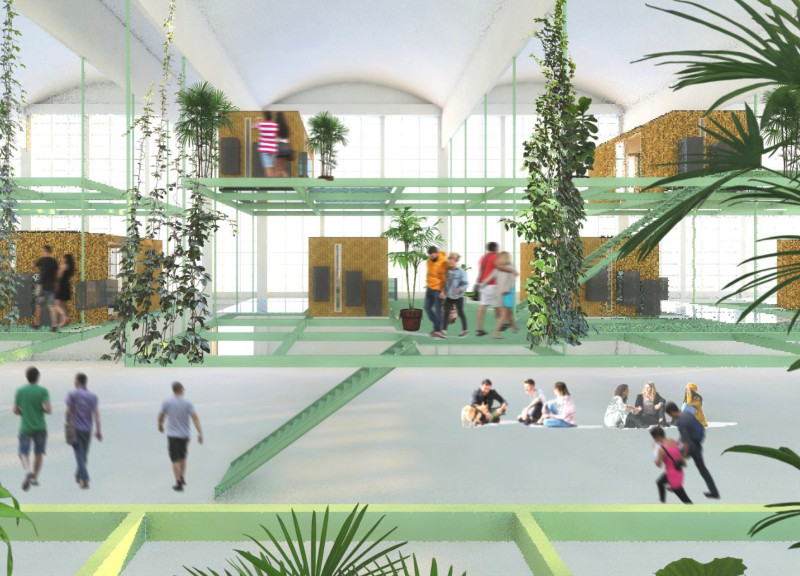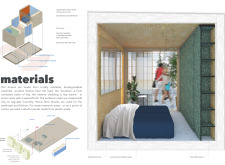5 key facts about this project
Located in Budapest, the project reimagines brownfield halls as living spaces that offer solutions to the city's housing challenges. By transforming underused sites into vibrant communities, it aims to provide affordable housing while encouraging social interaction. This design integrates residential units with commercial areas, creating a mixed-use environment that enhances urban life and fosters a sense of belonging among residents.
Structural Configuration
The design includes micro-housing units placed on two newly added floors within the brownfield hall. Each unit spans 25 m² and features a private terrace of similar size, allowing residents to enjoy outdoor space. The arrangement minimizes shadowing, ensuring that ample natural light fills each unit. Corridors connect the homes, facilitating movement and creating opportunities for social engagement, while still allowing for privacy.
Material Selection
Sustainability is a key focus in the choice of materials. The project uses locally sourced and biodegradable materials to reduce its environmental impact. Wooden frames provide the structural support, and untreated hay bales are used for insulation. Exterior walls are clad in hay weave, with some areas finished in wax for durability. Inside, clay-coated surfaces help regulate humidity, while hemp fiber boards serve as wardrobes and kitchen storage. Panels made from plastic waste are added in certain areas, contributing both function and aesthetic appeal.
Community Integration
Ground-floor areas are designated for small businesses, helping to create lively hubs that encourage community interaction. This design choice supports local economies and invites residents to engage with their surroundings. Every detail aims to foster a sense of community, making it easier for neighbors to connect. The proximity of amenities adds to the overall livability, enhancing daily interactions that build relationships among residents.
Natural Light and Environmental Considerations
Careful consideration is given to natural light in the design. Each micro-unit is positioned to maximize sunlight exposure, while still providing protection from the elements. The layout ensures comfortable living conditions throughout the year. Additionally, the rooftop includes photovoltaic panels, reflecting a commitment to renewable energy. This approach aligns with the overall goal of creating a sustainable and livable environment that works in harmony with nature.





















































